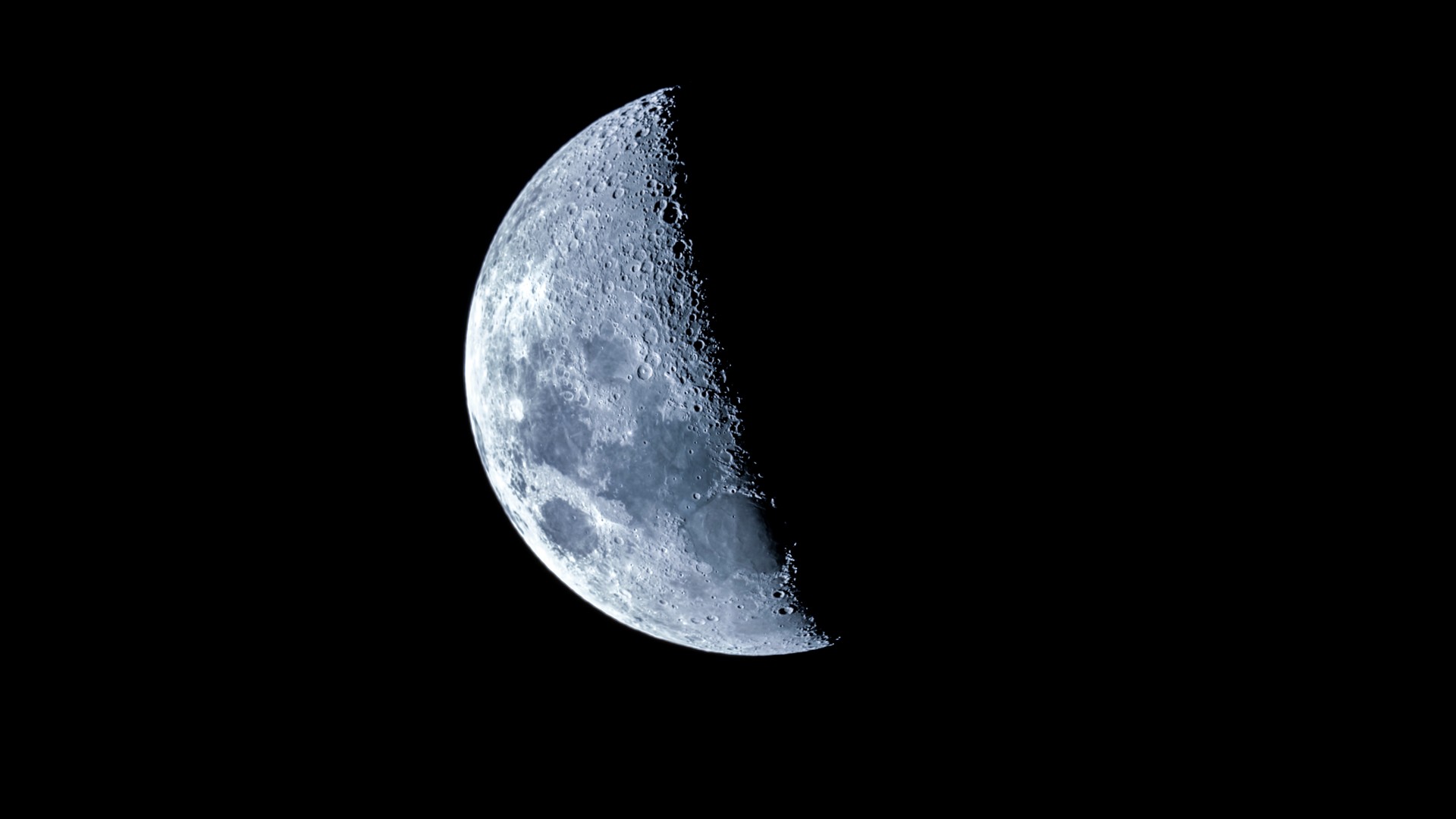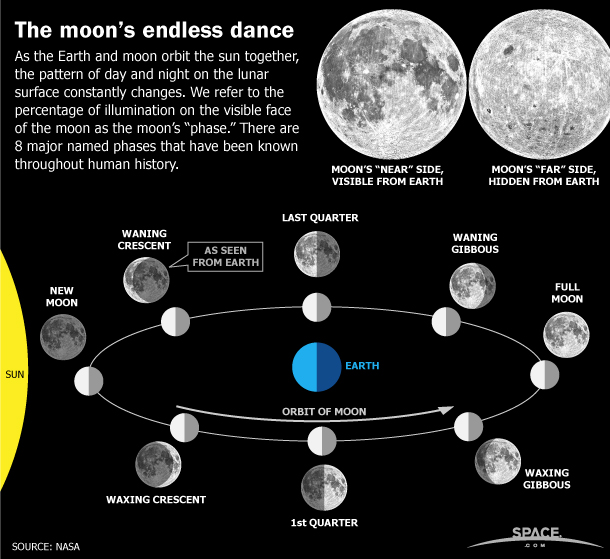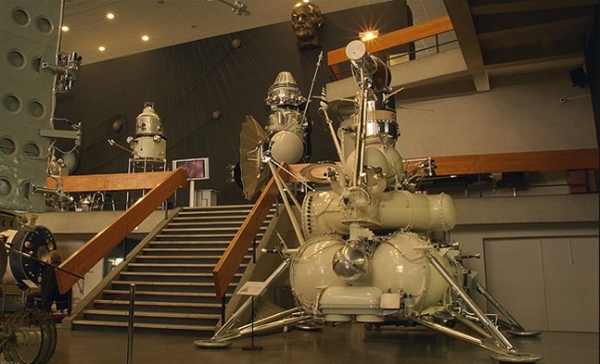The moon: Everything you need to know about Earth's companion
The moon has fascinated humans for millennia.

The moon is Earth's most constant companion and the easiest celestial object to find in the night sky.
The rhythm of the phases of the moon has guided humanity for millennia; for instance, calendar months are roughly equal to the time it takes to go from one full moon to the next. But the moon's orbit and phases can seem mysterious. for example, the moon always shows us the same face, but it's always changing size as how much of it we see depends on the moon's position in relation to Earth and the sun.
While it's a satellite of Earth, the moon, with a diameter of about 2,159 miles (3,475 kilometers), is bigger than Pluto. (And there are four other moons in our solar system even bigger than ours.)
The moon is a bit more than one-fourth (27%) the size of Earth, a much larger ratio (1:4) than any other moons to their planets. This means the moon has a great effect on our planet and may even be a major factor in making life on Earth possible.
Moon FAQs answered by an expert
We asked Chiara Ferrari-Wong, planetary scientist at the Hawai’i Institute of Geophysics and Planetology, a few frequently asked questions about the moon.
Chiara Ferrari-Wong is a PhD Candidate and Graduate Research Assistant at the Hawaii Institute of Geophysics and Planetology, affiliated with the University of Hawai'i at Mānoa. Her research focuses on remote sensing instrumentation and the study of volatiles present on the moon.
How far is the moon from Earth?
On average, the moon is approximately 238,860 miles (382,500 km) away from Earth, equivalent to about 30 Earth diameters.
How big is the moon compared to Earth?
In terms of diameter, the moon is approximately one-fourth the size of Earth. When it comes to surface area, the Moon covers about 1/16th of Earth's total surface area. In regards to mass, the moon has roughly 1.2% of Earth's mass.
When is the moon closest to Earth?
The point in the moon's orbit when it is closest to Earth is called perigee, often referred to as a "supermoon." At perigee, the moon is approximately 224,000 miles (360,000 km) from Earth. During a supermoon, the moon appears about 14% larger than at its furthest point, known as apogee or a "micromoon," it also appears around 30% brighter in the sky.
I believe it's hard to distinguish between a supermoon and a micromoon with the naked eye, but it is easier to see the direct effects by observing the tides. A spring tide occurs during the full and new moons and is when the tidal range is the largest. During a supermoon's spring tide, the tides exhibit approximately a 2-inch larger variation compared to regular spring tides. Conversely, during a micromoon's spring tide, the tides have a 2-inch smaller variation than normal spring tides. This difference occurs because the gravitational pull of the moon is stronger when it is closer to Earth during perigee and weaker when it is farther away during apogee.
What would happen if the moon crashed into Earth?
The moon, which is relatively large compared to our planet, is believed to have formed as a result of a collision between Earth and a smaller Mars-sized planet, based on analysis of lunar samples and the similarities in composition between the moon and Earth. So, in a sense, the moon did collide with Earth in the past.
Currently, the moon is not on a trajectory to crash into Earth. It is gradually moving away from Earth at about 1.5 inches per year. The moon plays several important roles, such as stabilizing the tilt of our orbit, causing seasonal changes, influencing tides, and aiding nocturnal animal navigation. If the moon were to suddenly disappear, it would lead to significant environmental changes, and life on Earth, particularly animals, would face challenges in adapting to such drastic shifts. However, due to its slow departure, we do not notice substantial changes.
If, hypothetically, the moon were to crash into Earth, the consequences would be dire for all life. To put it into perspective, the asteroid that caused the extinction of dinosaurs was approximately 12 km in diameter, whereas the moon has a diameter of about [2,174 miles] 3,500 km — roughly 300 times larger. However, there is a concept called the Roche limit, which represents the minimum distance at which a large satellite (like the moon) can approach its primary body (Earth) without tidal forces tearing it apart. At approximately 11,500 miles above Earth, the gravitational forces from Earth would overpower the gravitational forces holding the moon together, causing it to break apart. Over time, the moon's debris would rain down on Earth, burning in the atmosphere and leading to a warming climate beyond what life could survive. Ultimately, this catastrophic event could result in the extinction of life on Earth, except perhaps for some extremophiles.
How did the moon form?
There are various theories about how the moon was created, but recent evidence indicates it formed when a huge collision tore off a chunk of the primitive molten Earth, sending the raw ingredients for the moon into orbit.
Scientists have suggested the impacting object was likely about 10% the mass of Earth and about the size of Mars. Because Earth and the moon are so similar in composition, researchers have concluded that the impact must have occurred about 95 million years after the formation of the solar system, give or take 32 million years. (The solar system is roughly 4.6 billion years old.)
Breaking space news, the latest updates on rocket launches, skywatching events and more!
In 2015, new research gave further weight to this theory, using simulations of planetary orbits in the early solar system as well as newly uncovered differences in the abundance of the element tungsten-182 detected in the Earth and the moon.
While this theory, most commonly known as the large impact theory, is the dominant theory in the scientific community, there are several other ideas for the moon's formation. These include the concept that the Earth captured the moon, that the moon fissioned out of the Earth or even that Earth may even have stolen the moon from Venus.
What is the moon made of?
The moon very likely has a very small core, just 1% to 2% of the moon's mass and roughly 420 miles (680 km) wide. It likely consists mostly of iron, but may also contain large amounts of sulfur and other elements.
The moon's rocky mantle is about 825 miles (1,330 km) thick and made up of dense rocks rich in iron and magnesium. Magma in the mantle made its way to the surface in the past and erupted volcanically for more than a billion years — from at least four billion years ago to fewer than three billion years ago.
The crust that includes the lunar surface averages some 42 miles (70 km) deep. The outermost part of the crust is broken and jumbled due to all the large impacts the moon has endured , with the shattered zone giving way to intact material below a depth of about 6 miles (9.6 km).
Like our solar system's four innermost planets, the moon is rocky. It's pockmarked with craters created by asteroid impacts millions of years ago and, because there is no weather, the craters have not eroded.
Photos: Our changing moon
The average composition of the lunar surface by weight is roughly 43% oxygen, 20% silicon, 19% magnesium, 10% iron, 3% calcium, 3% aluminum, 0.42% chromium, 0.18% titanium and 0.12% manganese.
Orbiting spacecraft have found traces of water on the lunar surface that may have originated from deep underground. They have also located hundreds of pits that could one-day house explorers living on the moon long-term.
Ongoing observations from the Lunar Reconnaissance Orbiter (LRO) have shown that water is more abundant on slopes facing the lunar south pole, although scientists do caution that the water quantity is comparable to an extremely dry desert. Meanwhile, a 2017 study suggested the moon's interior could be abundant in water too.
Does the moon have an atmosphere?
The moon has only a very thin atmosphere, so a layer of dust — or a footprint — can sit undisturbed for centuries. And without much of an atmosphere, heat is not held near the surface, so temperatures vary wildly. Daytime temperatures on the sunny side of the moon reach 273 degrees F (134 Celsius); on the night side, it gets as cold as minus 243 F (minus 153 C).
How does the moon's orbit Earth and cause tides?
Here are some statistics from NASA:
- Average distance from Earth: 238,855 miles (384,400 km)
- Perigee (closest approach to Earth): 225,700 miles (363,300 km)
- Apogee (farthest distance from Earth): 252,000 miles (405,500 km)
- Orbit circumference: 1,499,618.58 miles (2,413,402 km)
- Mean orbit velocity: 2,287 mph (3,680.5 kph)
The moon's gravity pulls at the Earth, causing predictable rises and falls in sea levels known as tides. To a much smaller extent, tides also occur in lakes, the atmosphere and within Earth's crust.
High tides refer to water bulging up from Earth's surface, and low tides when water levels drop. High tide occurs on the side of the Earth nearest the moon due to gravity, and on the side farthest from the moon due to the inertia of water. Low tides occur between these two humps.
The pull of the moon is also slowing the Earth's rotation, an effect known as tidal braking, which increases the length of our day by 2.3 milliseconds per century. The energy that Earth loses is picked up by the moon, increasing its distance from the Earth, which means the moon gets farther away by 1.5 inches (3.8 centimeters) annually.
The moon's gravitational pull may have been key to making Earth a livable planet by moderating the degree of wobble in Earth's axial tilt, which led to a relatively stable climate over billions of years in which life could flourish.
The moon doesn't escape from this interplay unscathed. A new study suggests that Earth's gravity stretched the moon into its oddly distorted shape early in its lifetime.
What is an eclipse?
During eclipses, the moon, Earth and sun are in a straight line, or nearly so. A lunar eclipse takes place when Earth is directly between the sun and the moon, casting Earth's shadow onto the moon's face. A lunar eclipse can occur only during a full moon.
During a full lunar eclipse, because the moon is in shadow, it can appear blood red in the night sky.
A solar eclipse occurs when the moon passes between the sun and the Earth, casting the moon's shadow onto Earth. A solar eclipse can occur only during a new moon.
Depending on the degree to which the moon blocks the sun as seen from a particular location on Earth, a solar eclipse can be total, annular or partial. Total solar eclipses are rare in a given location because the shadow of the moon is so small on the Earth's surface.
Does the moon have seasons?
The Earth's axis of rotation is tilted about 23.5 degrees in relation to the ecliptic plane, an imaginary disk through Earth's orbit around the sun. This means the Northern and Southern hemispheres point somewhat toward or away from the sun depending on the time of year, varying the amount of solar radiation they receive and causing the seasons.
But the moon's axis is tilted by only about 1.5 degrees, so the moon doesn't experience noticeable seasons. This means that some areas are always lit by sunlight, and other places are perpetually draped in shadow.
Exploring the moon
Early observations from Earth
Some ancient communities believed the moon was a bowl of fire, while others thought it was a mirror that reflected Earth's lands and seas, but ancient Greek philosophers knew the moon was a sphere orbiting the Earth whose moonlight reflected sunlight.
The ancient Greeks also believed the dark areas of the moon were seas while the bright regions were land, which influenced the current names for those places — "maria" and "terrae," Latin for seas and lands, respectively.
The Renaissance astronomer Galileo Galilei was the first to use a telescope to make scientific observations of the moon, describing in 1609 a rough, mountainous surface that was quite different from the popular beliefs of his day that the moon was smooth.
Race to the moon
In 1959, the Soviet Union sent the first spacecraft to impact the moon's surface and returned the first photographs of its far side. This spurred a series of Cold War-era uncrewed missions launched by both the Soviet Union and the United States to observe the moon's surface.
Many of these early moon probes were failures or only partially successful. However, over time, these missions began to return information about the moon's surface and geological history. The United States launched a series of missions dubbed Pioneer, Ranger and Surveyor, while the Soviet Union sent probes under the names Luna and Zond.
The United States sent astronauts to the moon's orbit and surface in the 1960s and 1970s. The first crewed mission to the moon was in 1968, when the Apollo 8 astronauts orbited it.
In 1969, Apollo 11 landed the first astronauts on the moon, followed by five more successful surface missions (and one, Apollo 13, that didn't make to the moon but returned home safely). The moon remains the only extraterrestrial body that humans have ever visited.
The Apollo program's efforts returned 842 lbs. (382 kg) of rocks and soil to Earth for study. Scientists continue to study the rocks, and have made new discoveries as technology has improved. For example, in 2013, water was found in samples from Apollo 15, 16 and 17 — an interesting find given that previous analyses showed these rocks were quite dry.
The Soviet Union remained active in robotic lunar exploration through the 1960s and 1970s. The first robotic lunar sample return mission took place with Luna 16 in September 1970, after multiple failed attempts with other missions.
The Soviets also deployed the first robotic lunar rover, called Lunokhod 1, just two months later. Lunokhod 2, which deployed in 1973, set an off-world distance driving record for more than 40 years, until NASA's long-running but now-defunct Mars Opportunity rover mission surpassed it in 2014 after several years of driving.
Modern missions
After NASA's Apollo program ended and following an interlude of more than a decade, lunar exploration by U.S. spacecraft resumed in the 1990s.
Since then, a host of other government space agencies have also joined the moon rush, including Japan, the European Space Agency, China, India and Israel. China is the only one of those countries to successfully operate on the surface of the moon; landers sent by the latter two nations crash-landed.
Among other countries, Russia, Japan and the United Arab Emirates are discussing future moon missions.
Meanwhile, in 2019, the administration led by President Donald Trump announced that it was directing NASA to work on returning humans to the moon by as early as 2025. The initiative dubbed the Artemis program, relies on commercial and international partners to support a sustainable crewed exploration program powered by NASA's heavy-lift rocket, the Space Launch System (SLS).
The first mission of the Artemis Program — Artemis 1 — successfully laid the foundations for lunar exploration when it completed an uncrewed mission around the moon and back. NASA successfully launched Artemis 1 at 01:47 a.m. EST (0647 GMT) on November 16, from Launch Complex 39B at NASA's Kennedy Space Center in Florida. After a monumental 1.4 million-mile (2.3 million-kilometer) flight it splashed down in the Pacific Ocean off the coast of Baja California at 12:40 p.m. EST on Dec. 11.
Explore the moon yourself!
Fancy taking a more in-depth moonlit tour of our rocky companion? Our ultimate guide to observing the moon will help you plan your next skywatching venture whether it be exploring the lunar seas, mountainous terrain, or the many craters that blanket the landscape. You can also see where astronauts, rovers and landers have ventured with our Apollo landing sites observing guide.
If you're looking for a telescope or binoculars to observe the moon, our guides for the best binoculars deals and the best telescope deals now can help. Our best cameras for astrophotography and best lenses for astrophotography can also help you prepare to capture the next skywatching sight on your own.

Charles Q. Choi is a contributing writer for Space.com and Live Science. He covers all things human origins and astronomy as well as physics, animals and general science topics. Charles has a Master of Arts degree from the University of Missouri-Columbia, School of Journalism and a Bachelor of Arts degree from the University of South Florida. Charles has visited every continent on Earth, drinking rancid yak butter tea in Lhasa, snorkeling with sea lions in the Galapagos and even climbing an iceberg in Antarctica. Visit him at http://www.sciwriter.us
- Daisy DobrijevicReference Editor





